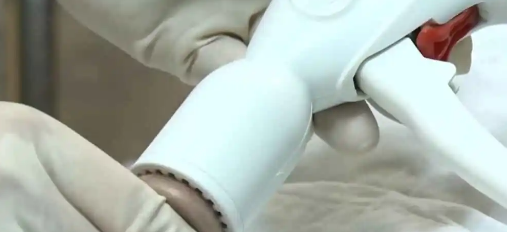
AV Fistula: The Lifeline for Dialysis Patients
Introduction
An arteriovenous (AV) fistula is a surgically created connection between an artery and a vein, primarily used for hemodialysis in patients with kidney failure. It is considered the gold standard for vascular access due to its durability, lower infection risk, and better long-term outcomes compared to catheters or grafts.
This blog covers:
✔ What is an AV fistula?
✔ Why is it necessary for dialysis?
✔ How is it created?
✔ Care & maintenance tips
✔ Potential complications & prevention
1. What is an AV Fistula?
An AV fistula is a direct connection between an artery (which carries oxygen-rich blood) and a vein (which returns blood to the heart). This procedure:
Enlarges the vein, making it stronger for repeated needle insertions.
Increases blood flow, allowing efficient dialysis.
Reduces complications like infections or clotting compared to catheters.
Common Sites for AV Fistula:
Forearm (Radiocephalic fistula) – Most common, between radial artery & cephalic vein.
Upper arm (Brachiocephalic fistula) – Between brachial artery & cephalic vein.
Brachial-basilic fistula – Less common, requires vein transposition.
2. Why is an AV Fistula Necessary for Dialysis?
Patients with end-stage renal disease (ESRD) require hemodialysis to filter waste from their blood. A well-functioning AV fistula:
✔ Provides high blood flow (300-500 mL/min) needed for dialysis.
✔ Lasts longer than grafts or catheters (often years).
✔ Reduces infection risk (unlike central venous catheters).
✔ Improves dialysis efficiency, leading to better patient outcomes.
When Should an AV Fistula Be Created?
Ideally 3-6 months before dialysis starts (allows time for maturation).
If kidney function declines (GFR < 15-20 mL/min).
3. How is an AV Fistula Created?
Surgical Procedure:
1. Pre-operative evaluation – Ultrasound mapping to check vein & artery health.
2. Local or general anesthesia – Minor surgery (takes ~1-2 hours).
3. Connection made – Artery & vein are joined (side-to-side, end-to-side, or end-to-end).
4. Healing & maturation – Takes 4-12 weeks before use.
Maturation Criteria:
Vein diameter ≥ 6 mm.
Blood flow ≥ 600 mL/min.
Easy needle insertion & sufficient depth.
4. How to Care for Your AV Fistula?
Proper care extends fistula lifespan and prevents complications.
Do’s:
✔ Check for a thrill (vibration) & bruit (whooshing sound) daily.
✔ Keep the area clean to prevent infections.
✔ Exercise the access arm (squeezing a stress ball improves blood flow).
✔ Rotate needle sites to avoid aneurysms.
Don’ts:
✖ Avoid tight clothing or jewelry on the fistula arm.
✖ No blood pressure checks or injections on that arm.
✖ Don’t sleep on the fistula side (can restrict blood flow).
✖ Avoid heavy lifting right after surgery.
5. Potential Complications & Prevention
Complication
Symptoms
Prevention/Treatment
Infection
Redness, swelling, fever
Keep clean, antibiotics if needed
Clotting (Thrombosis)
Loss of thrill, weak pulse
Blood thinners, thrombectomy
Stenosis (Narrowing)
Poor dialysis flow, arm swelling
Angioplasty, stent placement
Aneurysm
Bulging vein, thin skin
Avoid repeated needle sticks, surgical repair
Steal Syndrome
Cold, numb, painful hand
Blood flow revision surgery
6. When to Seek Medical Help?
🚨 Call your doctor if you notice:
No thrill/bruit (possible clotting).
Swelling, redness, or pus (infection risk).
Persistent pain or weakness in the arm.
Bleeding that doesn’t stop after dialysis.
Final Thoughts
An AV fistula is the best long-term vascular access for dialysis patients. Proper surgical planning, post-op care, and monitoring can prevent complications and ensure smooth dialysis sessions.
💡 Pro Tip: Protect your fistula arm—it’s your lifeline!